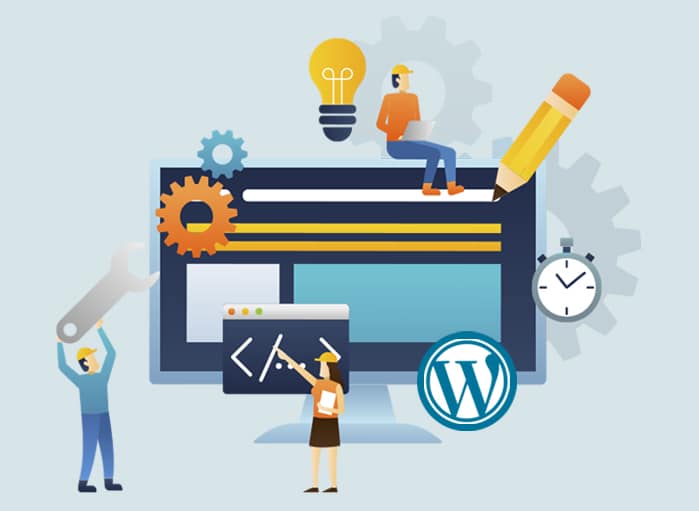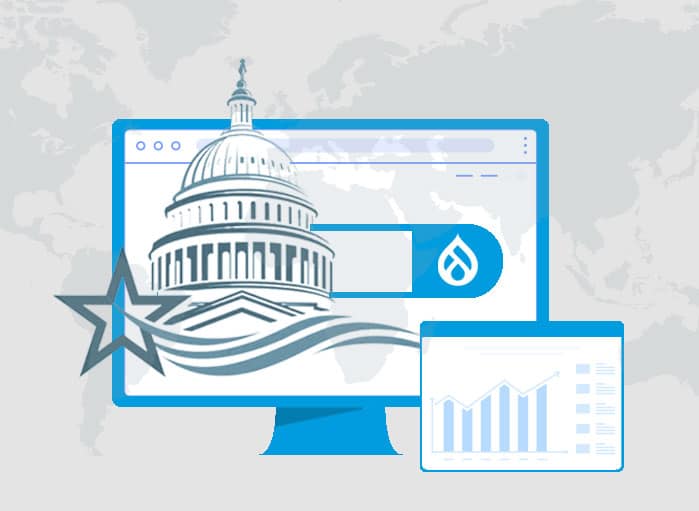
Core Web Vitals WordPress
Tags: Web Development,WordPress
eWay Corp September 22, 2022 2 MIN READ

If you’ve tried your best to design a WordPress website that performs well and converts users into customers, but you’re falling short of what you expect, you might need to take a close look at your website’s Core Web Vitals. These scores can shed critical light on your site’s performance and help you determine what needs to be done to meet the needs of your customer base.
Google’s Core Web Vitals can help point out potential issues with your website and give you the tools you need to improve user experience. Let’s explore how these scores are determined and steps that you can take to make various improvements to your site’s performance.
What are Core Web Vitals?
According to Google, Core Web Vitals are the three main metrics for measuring and improving user interactions on a given website.
These metrics include the following:
- Largest Contentful Paint (LCP): Loading performance for websites
- Cumulative Layout Shift (CLS): Visual stability for websites
- First Input Delay (FID): Website interactivity
LCP
The Largest Contentful Paint (LCP) metric measures how quickly the main content of pages becomes visible to site visitors. While a site may have fast loading speeds, it does not always translate to a fast LCP, as this metric takes all site content types into account. This includes images, descriptions, and videos.
Ideally, a site’s LCP should only take 2.5 seconds to load after a visitor reaches the page.
CLS
The Cumulative Layout Shift (CLS) metric determines how long it takes for the elements of a page to stop calibrating as the page loads. For example, a poor CLS value might make it easy for a visitor to click the wrong button or link during the initial load, as site elements are still moving into their designated place on the page.
To minimize misclicks, it’s critical to optimize your site’s CLS score. Aim for a score of 0.1 or less.
FID
The First Input Delay (FID) metric measures how long it takes for a user’s actions to register with the platform. Let’s say a user is purchasing an item from your website and hits the “Submit Order” button. The FID metric determines how long it takes for your site to process this action.
Google recommends an FID score of 100 milliseconds or fewer.
Why Are Core Web Vitals Important?
As the name implies, Core Web Vitals are measurements that gauge the vital functions of your website to determine its overall quality. They measure how quickly and easily users can interact with the content on a website.
Good WordPress Core Web Vitals scores help store owners visualize how well they’re able to meet the needs of their customers. Fast, simple user experiences improve the odds of a website converting a casual visitor into a loyal, repeat customer.
Additionally, better Core Web Vitals scores will improve a site’s SEO rankings, which help make the site visible to more users at higher search engine rankings. Increased visibility paired with a streamlined experience boosts visitor numbers, increases sales, and improves customer satisfaction.
How to Measure Your Website’s Core Web Vitals
To quickly test and monitor your website’s Core Web Vitals score, use Google’s free Page Speed Insights tool. Enter the URL of your website or online store and click the “Analyze” button. You can also make use of the Google Search Console’s Core Web Vitals report feature or refer to the Chrome User Experience Report.
According to Google, Core Web Vitals for WordPress sites are scored as such:
LCP
- Good – ≤ 2.5 seconds
- Needs Improvement – ≤ 4.0 seconds
- Poor – > 4.0 seconds
FID
- Good – ≤ 100 milliseconds
- Needs Improvement – ≤ 300 milliseconds
- Poor – > 300 milliseconds
CLS
- Good – ≤ 0.1 seconds
- Needs Improvement – ≤ 0.25 seconds
- Poor – > 0.25 seconds
How to Improve Core Web Vitals on WordPress Stores
Like many website owners, you probably want to take steps to improve the Core Web Vitals on your WordPress store. Though it isn’t the easiest endeavor, reaching a passing score can be incredibly rewarding.
To get started, try one or more of these seven tips.
1. Reduce LCP
If your website is taking longer to load than what it takes to receive a good LCP score, try resizing your page’s images and making them a bit smaller, or break up long sections of text into smaller paragraphs (this also improves readability).
You can also:
- Preload your LCP images
- Compress images
- Remove unused JavaScript and CSS
- Serve images from a CDN
- Remove some images
- Eliminate render-blocking resources
- Optimize fonts
2. Boost FID
If your site is taking too long to register a user’s interaction, you can improve your FID score in the following ways:
- Deferring, delaying, or minifying JavaScript
- Combining CSS and Javascript
- Removing unused Javascript
- Removing heavy page builders that add extra CSS and JavaScript
- Checking for issues in cache plugins
- Replace faulty plugins with optimizing Core Web Vitals plugins through WordPress
- Reducing unnecessary code
- Splitting large files into smaller pieces
- Optimizing images and animations
3. Improve CLS
If you find that your site’s elements take too long to move into their designated places on the page, you can take the following steps to improve your site’s CLS score.
- Set dimensions for images, videos, ads, and other elements
- Host fonts on your local server and test preloading
- Use CSS transfer for your animations instead of height and width attributes
- Optimize CSS delivery
- Delay JavaScript to prevent new content, unless triggered by usage
4. Select the Best WordPress Host
Depending on the type of website you operate and any unique needs you have, your idea of the perfect WordPress host may differ somewhat from that of another site owner. However, here are some of the most popular hosts for WordPress, as well as a bit of information about what makes them ideal.
- Pressable: A preferred host for designers and agencies
- Hostinger: A great choice for affordability
- Bluehost: Excellent option for users who are new to website hosting
- SiteGround: Good for site owners who require dedicated customer support
- A2 Hosting: Useful for website migration from one host to another
5. Use a CDN
A CDN, or content delivery network, is a company that operates by using local servers to deliver website content to users as quickly as possible.
Using a CDN can improve Core Web Vitals, enhancing your website’s sturdiness and performance, making it more resistant to crashes, improving your SEO rankings, optimizing user experiences, and reducing your server’s bandwidth usage.
A few CDN options for WordPress sites include:
- Image CDN
- MetaCDN
- Google Cloud’s CDN
- KeyCDN
- Microsoft Azure CDN
6. Monitor Your Core Web Vitals Regularly
Core Web Vitals are not something that you as a website owner need to look at just once. To keep your scores high and reduce site issues before they cost you visitors or customers, it’s important to regularly revisit your Core Web Vitals scores.
Try keeping a schedule of your website examinations and use the following tools to monitor any changes in your scores: Web Vitals Extension, Google’s Search Console, Chrome’s UX Report, and Page Speed Insights. Each of these tools monitor all three Core Web Vitals and provide site owners with information and advice they can use to improve site performance.
7. Prioritize Mobile First
Google’s algorithm prefers to rank websites that are mobile-friendly, so if your website is not optimized for mobile users, it’s a good idea to make some changes. This way, you can not only improve your scores, but attract more visitors and increase your SEO rankings at the same time. After all, the majority of today’s internet users surf the web using smartphones and tablets so it’s a smart move to make your website easy for these users to navigate.
If possible, choose a responsive theme for your website, one that arranges your content in the same way regardless of whether users are accessing your pages via phone, laptop, tablet, or desktop.
You can improve Core Web Vitals with WordPress themes that are mobile-friendly, like these:
- Neve
- Astra
- Uncode
- H-Code
- Hestia
- JustBlue
What to Do if Your Web Vitals Are Still Failing
Despite your best efforts, you may find that your Core Web Vitals scores are still lower than what you’d like to see. While this can be disheartening, it’s worth noting that in a study of over 5 million websites, only about 33% passed the Core Web Vitals threshold. Additionally, only 4 out of the top 10 desktop websites in the US passed the Core Web Vitals test.
It’s not the end of the world if your website does not meet the passing threshold for these scores. They’re more of a guideline to aim for than a website requirement.
If following the above tips has not moved your website into positive scores, you might want to focus on optimizing your desktop website first, then work on the mobile-friendly aspects. It’s easier for site owners to meet Core Web Vitals passing scores for desktop sites than it is to do the same for mobile sites.
Optimizing websites and WordPress stores takes time and effort, and site owners need to set aside time to keep up with performance monitoring. Understandably, this process can feel overwhelming, and if you’re still struggling to enhance your site’s performance, it might be time for an upgrade. Contact eWay Corp anytime! Our team can help retailers and website owners upgrade from WordPress to a more ideal platform.



